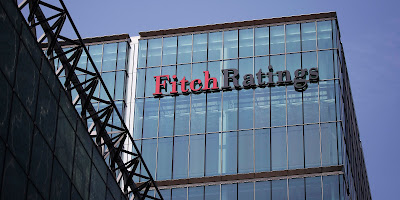Fitch Ratings Receives a (European) Record Fine for yet another Conflict of Interest
In this short post, we will review the news from a couple of
weeks ago that Fitch Ratings, the third member of the Credit Rating Agency
oligopoly, has been fined by the European Securities and Markets Authority
(ESMA) for breaching its conflict of interest-related rules, specifically with
regards to its ownership.
Fitch Ratings is the third member of the rating oligopoly
and, like S&P is not a public company. Therefore, its ownership
structure is a little more opaque and difficult to accurately determine. We
know that the firm is owned by the influential Hearst Group, but only after the
Group increased its stake in the agency at the expense of previous majority
shareholder, French conglomerate Fimalac,
in 2014. It is in relation to the ownership of Fimalac that this current
regulatory action relates. Yet, whilst most CRA-related transgressive behaviour
revolves around weighted bias – weighted in relation to the power dynamics
within the rating industry and its connection to issuers and investors – this particular
transgression was far more obvious.
ESMA had been investigating Fitch’s ratings of a French
Supermarket group called Casino.
The investigation has now concluded that, in relation to its ratings of the
Casino Group from 2013 to 2015, the agency had failed to ‘meet the
special care expected from a credit-rating agency as a professional firm in the
financial service sector’. This was because between 2013 to 2015, one of
the supermarket’s Board – Marc Ladreit de Lacharriére – also owned a stake in Fimalac. As Fimalac was a majority
owner of Fitch at the time, this conflict should have been declared; this is
based on rules established in 2013 that states that nay shareholder with more
than 10% in the agency must not sit on the board of a company the agency then
rates. For not declaring and then removing the conflict, ESMA has fined Fitch
Ratings a record fine of €5.1 million. According to the Financial Times, that fine covered three other breaches for similar
violations.
What this episode does is bring into the limelight the
potential for transgressive behaviour within the credit rating industry – it is not agency specific. In
2015 S&P was fined a record $1.5
billion, whilst Moody’s was fined $864
million. First time observers may think that this demonstrates this
behaviour as only existing at the very top of the industry and, thus, creating
a ‘duopoly’ instead of the oft-cited ‘oligopoly’. However, the truth is that
Fitch provided documentary evidence detailing the transgressions of the other
two instead of settling with CalPERS – the Californian pension fund that
initiated the legal action against the Big Two – which tells us that they were
not entirely guilt-free, but possessed the evidence needed to avoid being
caught up with the Big Two. This current story tells us that it is the modern
version of a ‘rating agency’ which is actually the transgressive vehicle, and
not one particular agency. Fitch Ratings said, in response to the fine, that
they are well aware of the European Regulations and acted in good faith. If
this is true, then a record fine would not have followed. There are many
transgressive industries within the financial sector, but the sheer consistency
of transgressive behaviour from within the credit rating industry is
remarkable, and shows no sign of abating.
Keywords – Credit rating, Financial Services, oligopoly, EU,
@finregmatters





Comments
Post a Comment